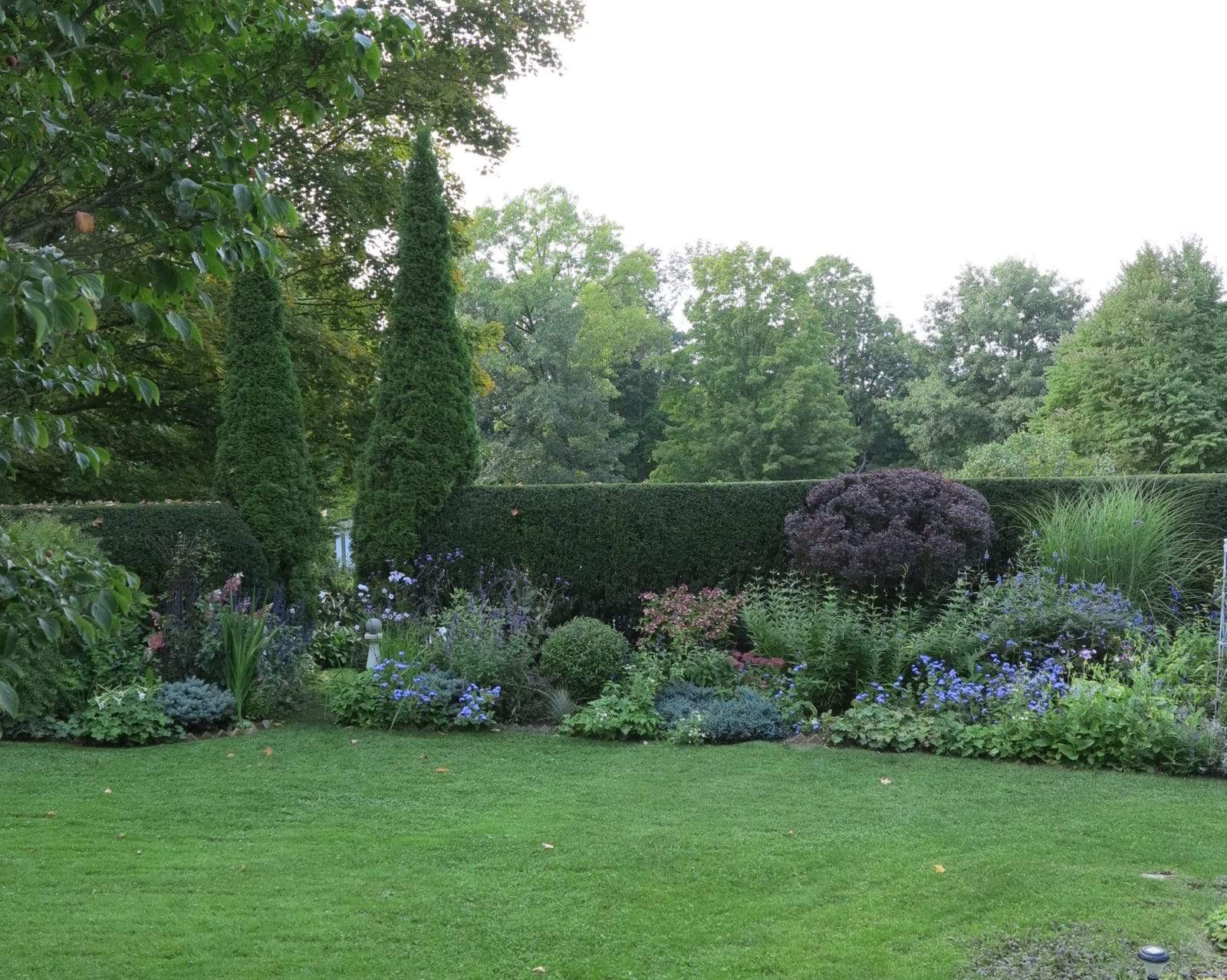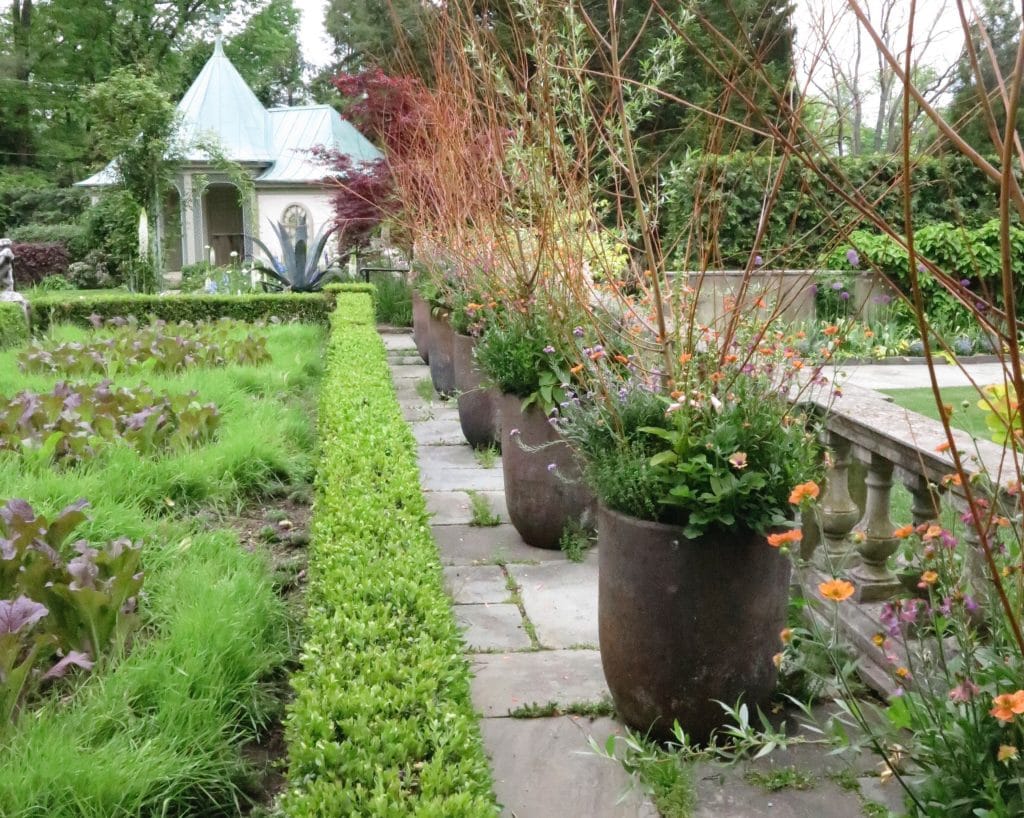
Beguiling gardens tell a story, and what’s a meaningful narrative without punctuation? As an instructor at De Montfort University in England says, “Punctuation marks are like signposts; they guide us through language, reminding us when to pause and when to stop and are essential for clear…communication.”
With some thought and careful parsing, you can use punctuation marks to work a similar magic in your garden, turning a horticultural stream of consciousness into a lucid tale well told. Interestingly, two of the four main attributes of a richly satisfying landscape, according to University of Michigan environmental psychologists Stephen and Rachel Kaplan, are coherence and legibility, both of which make a space more comprehensible and comfortable to be in.
For the garden grammarian, punctuation can incorporate the marks’ actual form and/or function (as either “separator” or “terminator”) through various means, from plants and structures to colours and shapes. Think how you want the garden to “read,” where divisions, stops and pauses make sense, and where some clarifying punch or wow factor is needed.
Exclamation mark
The exclamation mark (or point) arrived in the 15th century when it was called “the sign of admiration” and used to show emphasis. Denoting strong feeling or high volume today, it’s referred to as a screamer, slammer or startler in publishing parlance, and is vastly overused in social media (witness OMG!!!!). But it can translate very effectively to the landscape, in both form and function. Add a strong vertical element such as a fastigiate plant (see “Pointy Plants”), a tall sculpture or a painted obelisk and see how it makes an emphatic point. As a terminator mark, it can be used to break up potentially boring mass plantings, emphasize a turning point in a path, create an attention-grabbing centrepiece, or draw the eye up to the next layer of the garden or away from a less desirable view. As in print, restraint is key. Don’t overdo it.
Pointy plants
‘Graham Blandy’ boxwood (Buxus sempervirens ‘Graham Blandy’): 7 feet (2 m), Zone 5
Feather reed grass (Calamagrostis x acutiflora ‘Karl Foerster’): 6 feet (1.8 m), Zone 3
Columnar plum yew (Cephalotaxus harringtonia ‘Fastigiata’): 10 feet (3 m), Zone 6
‘Wissel’s Saguaro’ Lawson cypress (Chamaecyparis lawsoniana ‘Wissel’s Saguaro’): 15 feet (4.6 m), Zone 7
‘Red Obelisk’ European beech (Fagus sylvatica ‘Red Obelisk’): 40 feet (12 m), Zone 4
‘Sky Pencil’ Japanese holly (Ilex crenata [Fastigiata Group] ‘Sky Pencil’): 10 feet (3 m), Zone 6
‘Blue Arrow’ juniper (Juniperus scopulorum ‘Blue Arrow’): 14 feet (4.2 m), Zone 4
‘Slender Silhouette’ American sweet gum (Liquidambar styraciflua ‘Slender Silhouette’): 50 feet (15 m), Zone 6
Bruns weeping Serbian spruce (Picea omorika ‘Pendula Bruns’): 25 feet (7.6 m), Zone 5
‘DeGroot’s Spire’ cedar (Thuja occidentalis ‘DeGroot’s Spire’): 20 feet (6 m), Zone 3
Period
The most definite terminator is the period — or full stop, as it’s more evocatively called in England. We can thank Aristophanes of Byzantium for coming up with this elegant indication of a finished thought. Its simple shape is both useful and ornamental in the garden, from clipped evergreen globes and rounded standard-form trees to armillary spheres, gazing globes and circular pavers. But function is key here: creating garden-worthy stop signs and “sentences” is not restricted to balls and orbs. Effective ways of incorporating periods include:
- indicating a defined ending — a sculpture at the end of an allée, or a pond at the end of a trickling stream, for example;
- marking a place to stop and consider before starting a new “thought” — a gate between two different garden areas, or a clearing in a woodland perhaps;
- creating a place to stop and linger — a gazebo at the end of path, or a terrace with a bench overlooking a view.
Comma
Punctuation marks began as dramatic notations, indicating to actors and readers-aloud where to stop for breath. So not surprisingly, the small but mighty comma is practised at creating pauses and bringing order to linguistic harum-scarums. As self-confessed British stickler Lynn Truss wrote in Eats, Shoots & Leaves, her book on punctuation, the comma “tears about on the hillside of language, endlessly organizing words into sensible groups and making them stay put; sorting and dividing; circling and herding….” Placement of commas is crucial on the written page, as Truss made hilariously clear, but thankfully not quite so critical in the garden. The comma’s literal shape is less translatable, but its function as separator is invaluable.
Use distinctive plants as visual pauses or breaks to set off groups of plants, creating vignettes like good subordinate clauses within the whole. Employing the same plant as commas, or different plants of the same colour or shape, not only performs the commas’ herding duties but also brings repetition and rhythm to the plantings, carrying the eye along and adding a welcome sense of ebb and flow.
Good comma plants are orderly in themselves and do their job companionably. Consider red and yellow Japanese barberries, particularly Sunsation (Berberis thunbergii ‘Monry’) and ‘Concorde’ (B. t. ‘Concorde’); variegated Japanese forest grass (Hakonechloa macra ‘Aureola’); lavender (Lavandula spp. and cvs.); and any number of dwarf conifers, ferns, hostas and hellebores.
Brackets, parentheses
Square brackets were named for their resemblance to bookshelf supports, “lifting up” that part of a sentence; curved brackets are commonly called parentheses, literally “a putting in beside.” Both enclose and set something apart. In the garden, they can be horizontal — think curving walls or hedges embracing a sitting area, for example, or parenthetical borders surrounding a cool green lawn. Or go vertical and use an arbour, a duo of columnar plants or a pair of decorative screens to frame a view, enhance an entry or bracket a garden feature. The opposite but complementary shapes of brackets or parentheses offer pleasing symmetry and a geometry that can add new facets to the underlying structure (or “bones”) of the garden.

Ellipses
In print, three or four dots in a row indicate material that has been omitted, but also act as links to what comes before and after. Take the latter approach in the garden with a row of pots, a line of sculptures or a series of little boxwood mounds, for instance, that not only link areas but also, like the commas, draw the eye along through that valuable technique of repetition. Such rows often convey a more formal or modernist feel and can be used to break up a large blank wall, create an allée, edge a terrace, line a path, form a screen or define a transitional zone (such as between the house and garage). That said, on a smaller scale, a line of old tins planted with a tumble of colourful annuals can add whimsical punctuation to a weathered fence or sunny windowsill.
Like all effective design, garden punctuation should contribute to coherence without drawing too much attention to itself — well, except for those “look at me, look at me” exclamation marks. Thankfully, gardeners are natural editors, so if your garden story isn’t quite the page-turner you hoped for, you can always rewrite it.
